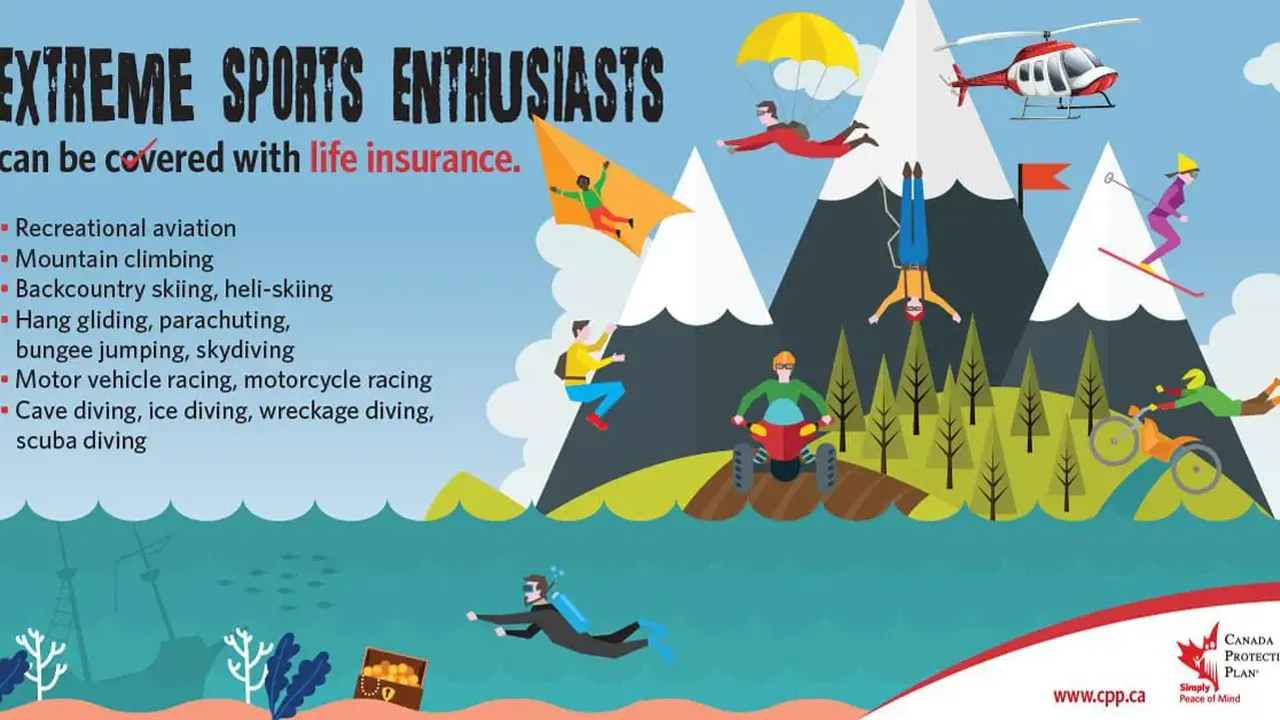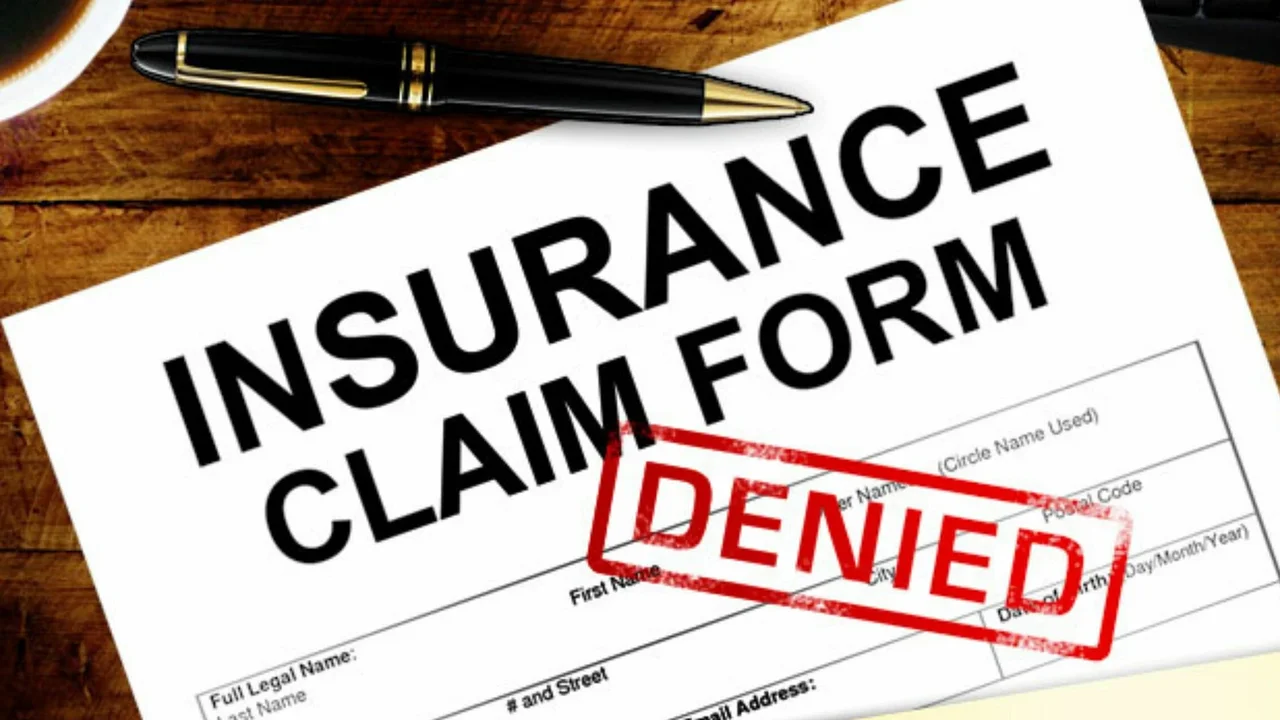High-Risk Insurance for Extreme Sports: Is It Essential?
Participating in high-risk activities? Find the right travel insurance. We compare the top 7 plans for US travelers. Get covered for injuries, emergencies, and more.

Understanding the Need for Extreme Sports Insurance
So, you're gearing up for some serious adrenaline-pumping action? Awesome! But before you hurl yourself off that cliff, shred that gnarly wave, or barrel down that mountain, let's talk about something crucial: insurance. You might be thinking, "Insurance? Nah, I'm invincible!" And that's the spirit! But even the most skilled and cautious extreme sports enthusiasts can run into trouble. That's where high-risk insurance comes in. It's not just a piece of paper; it's your safety net when things go south.
Extreme sports, by their very nature, involve a higher degree of risk than your average jog in the park. We're talking about activities like:
- Skydiving and BASE Jumping: Plummeting from great heights? Yeah, that needs special coverage.
- Rock Climbing and Mountaineering: Scaling sheer cliffs or tackling snow-capped peaks? The mountains are beautiful, but unforgiving.
- Whitewater Rafting and Kayaking: Battling raging rapids? Mother Nature can be a beast.
- Motocross and Off-Road Racing: Pushing vehicles (and yourself) to the limit? Crashes happen.
- Scuba Diving (Especially Technical Diving): Exploring the depths of the ocean? The pressure is on, literally.
- Big Wave Surfing: Riding monstrous waves? Wipeouts are inevitable.
These activities are exhilarating, but they also carry a significant risk of injury, equipment damage, or even the need for emergency medical evacuation. Regular travel insurance often excludes these activities, leaving you financially vulnerable if something goes wrong. That's where specialized high-risk insurance steps in.
What Does Extreme Sports Insurance Cover?
Okay, so you're convinced you need it. But what exactly does high-risk insurance cover? Here's a breakdown:
- Medical Expenses: This is the big one. If you get injured while participating in an extreme sport, medical bills can be astronomical, especially if you need specialized treatment or hospitalization. High-risk insurance covers these costs, ensuring you get the care you need without bankrupting yourself.
- Emergency Medical Evacuation: Imagine you're injured in a remote location, far from medical facilities. Emergency medical evacuation, often by helicopter, is crucial. This can be incredibly expensive, but high-risk insurance typically covers it.
- Repatriation: If the worst happens and you need to be transported back to your home country, repatriation coverage takes care of the costs.
- Equipment Coverage: Extreme sports often require expensive gear. High-risk insurance can cover the cost of repairing or replacing damaged or stolen equipment. Think skis, snowboards, climbing gear, diving equipment, etc.
- Personal Liability: If you accidentally injure someone else or damage their property while participating in an extreme sport, personal liability coverage can protect you from financial responsibility.
- Trip Cancellation and Interruption: Unexpected events can force you to cancel or interrupt your trip. High-risk insurance can reimburse you for non-refundable expenses.
Why You Can't Rely on Standard Travel Insurance for Extreme Sports
Think your regular travel insurance will cover you? Think again. Most standard travel insurance policies specifically exclude high-risk activities. They're designed for more conventional travel scenarios, like sightseeing, relaxing on the beach, or attending business meetings. Extreme sports involve a level of risk that standard policies simply aren't designed to handle.
Here's why standard travel insurance falls short:
- Exclusion of High-Risk Activities: Policies often have a clause that explicitly excludes activities deemed "dangerous" or "high-risk."
- Limited Coverage for Medical Expenses: Standard policies may have lower limits on medical expense coverage, which may not be sufficient for the potential costs associated with extreme sports injuries.
- Lack of Coverage for Specialized Equipment: They typically don't cover the specialized equipment used in extreme sports.
- Inadequate Emergency Medical Evacuation Coverage: Standard policies may not cover the high costs of emergency medical evacuation from remote locations.
Top High-Risk Insurance Products and Their Uses
Alright, let's dive into some specific high-risk insurance products that cater to different extreme sports and needs. We'll look at what they cover, their pros and cons, and rough price ranges (always check directly with the provider for the most up-to-date pricing!).
1. World Nomads Explorer Plan
What It Covers: This is a popular option for backpackers and adventure travelers, including coverage for many extreme sports like rock climbing (up to certain altitudes), scuba diving (with certification), and hiking. It offers medical coverage, emergency evacuation, and gear protection.
Use Case: Imagine you're planning a multi-week backpacking trip through Southeast Asia, with plans to rock climb in Thailand and scuba dive in Indonesia. The Explorer Plan provides a broad range of coverage, making it a solid choice.
Pros: Wide range of covered activities, flexible policy options, easy to purchase online.
Cons: Can be more expensive than basic travel insurance, some activities have specific limitations.
Price Range: Varies significantly based on trip length, destination, and age of the traveler, but expect to pay anywhere from $100 to $500+ for a multi-week trip.
2. IMG Signature Travel Insurance
What It Covers: IMG Signature Travel Insurance offers robust coverage, including medical, trip interruption, and baggage loss. It's particularly useful for adventure travelers looking for higher coverage limits and optional add-ons for specific activities.
Use Case: Let's say you're planning a mountaineering expedition in the Himalayas. IMG Signature can be tailored to include high altitude trekking coverage and enhanced medical evacuation benefits, ensuring you're prepared for the unique challenges of the trip.
Pros: High coverage limits, customizable options, excellent customer service.
Cons: Can be pricier than other options, requires more research to customize the policy effectively.
Price Range: Similar to World Nomads, but potentially higher depending on the coverage limits and add-ons selected.
3. Divers Alert Network (DAN) Dive Insurance
What It Covers: Specifically designed for scuba divers, DAN Dive Insurance provides coverage for diving-related injuries and illnesses, including decompression sickness. It also covers emergency medical evacuation and search and rescue.
Use Case: You're a certified scuba diver heading to the Caribbean for a week of diving. DAN Dive Insurance is a must-have, as it's specifically tailored to the risks of diving and provides specialized coverage that other policies may not offer.
Pros: Specialized coverage for diving-related incidents, access to a network of dive medical professionals, relatively affordable.
Cons: Only covers diving-related incidents, not general travel issues.
Price Range: Typically ranges from $100 to $300 per year for individual coverage.
4. Global Rescue
What It Covers: Global Rescue is not strictly insurance, but rather a membership-based service that provides medical and security evacuation services. It's ideal for travelers venturing into remote or high-risk areas where traditional insurance may not be sufficient.
Use Case: You're planning a backcountry skiing trip in Alaska. Global Rescue provides access to emergency medical and security evacuation services, ensuring you can be rescued and transported to a medical facility in case of an accident or injury.
Pros: Access to specialized evacuation services, coverage in remote and high-risk areas, 24/7 support.
Cons: More expensive than traditional insurance, doesn't cover medical expenses (requires separate insurance for that).
Price Range: Membership fees range from $300 to $700+ per year.
5. Ripcord Rescue Travel Insurance
What It Covers: Ripcord combines travel insurance with rescue and evacuation services. They'll get you out of a sticky situation, plain and simple. Their plans are designed for the adventurous traveler who might find themselves in a remote area needing extraction.
Use Case: Imagine you're on a challenging trekking expedition in Nepal. If you get injured and need evacuation, Ripcord coordinates and covers the costs, ensuring you get the medical attention you need.
Pros: Combines insurance and rescue services, comprehensive coverage, excellent for remote locations.
Cons: Can be on the pricier side.
Price Range: Expect to pay a premium, with prices varying based on trip length and coverage needs.
Comparing High-Risk Insurance Options
Choosing the right high-risk insurance plan can feel overwhelming. Here's a quick comparison to help you narrow down your options:
| Provider | Coverage Focus | Key Features | Price Range (Approximate) |
|---|---|---|---|
| World Nomads Explorer Plan | General Adventure Travel | Wide range of activities, flexible options | $100 - $500+ (per trip) |
| IMG Signature Travel Insurance | High Coverage Limits | Customizable, high medical limits | Similar to World Nomads, potentially higher |
| DAN Dive Insurance | Scuba Diving | Specialized diving coverage, dive medical network | $100 - $300 (per year) |
| Global Rescue | Evacuation Services | Medical and security evacuation, remote area coverage | $300 - $700+ (per year) |
| Ripcord Rescue Travel Insurance | Combined Insurance and Rescue | Comprehensive, ideal for remote locations | Premium pricing |
Important Considerations:
- Activity-Specific Coverage: Ensure the policy covers the specific extreme sport you'll be participating in.
- Coverage Limits: Check the coverage limits for medical expenses, emergency evacuation, and equipment.
- Exclusions: Be aware of any exclusions in the policy, such as pre-existing conditions or certain types of accidents.
- Customer Reviews: Read reviews from other travelers to get an idea of the provider's customer service and claims process.
Real-World Scenarios: When High-Risk Insurance Saved the Day
Let's look at a few real-world examples where high-risk insurance proved invaluable:
- The Skiing Accident: A skier suffered a severe knee injury while skiing off-piste in Switzerland. His high-risk insurance covered the cost of emergency medical evacuation by helicopter, surgery, and rehabilitation, totaling over $50,000. Without insurance, he would have been financially devastated.
- The Diving Mishap: A scuba diver experienced decompression sickness while diving in the Great Barrier Reef. Her DAN Dive Insurance covered the cost of hyperbaric chamber treatment, which can be incredibly expensive.
- The Climbing Rescue: A rock climber fell and broke his leg while climbing in Yosemite National Park. His climbing insurance covered the cost of a helicopter rescue and subsequent medical treatment.
Tips for Choosing the Right High-Risk Insurance
Here are some final tips to help you choose the best high-risk insurance plan for your needs:
- Research Thoroughly: Don't just choose the first policy you find. Compare multiple providers and policies to find the best fit.
- Read the Fine Print: Understand the terms and conditions of the policy, including coverage limits, exclusions, and claims process.
- Consider Your Destination: Some destinations have higher medical costs or require specific types of coverage.
- Talk to an Insurance Professional: If you're unsure which policy is right for you, consult with an insurance professional who specializes in adventure travel.
- Don't Wait Until the Last Minute: Purchase your insurance well in advance of your trip to ensure you have adequate coverage.
Extreme sports are all about pushing your limits and experiencing the thrill of adventure. But it's crucial to do so responsibly and protect yourself from potential risks. High-risk insurance is an essential tool for any extreme sports enthusiast. It provides peace of mind, knowing that you're covered in case of an accident or injury. So, gear up, get insured, and get out there – safely!
:max_bytes(150000):strip_icc()/277019-baked-pork-chops-with-cream-of-mushroom-soup-DDMFS-beauty-4x3-BG-7505-5762b731cf30447d9cbbbbbf387beafa.jpg)






